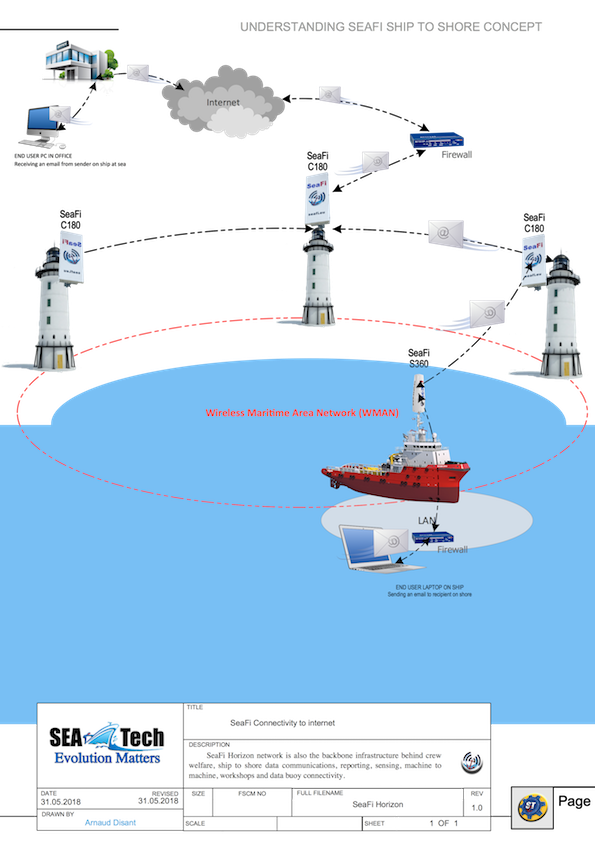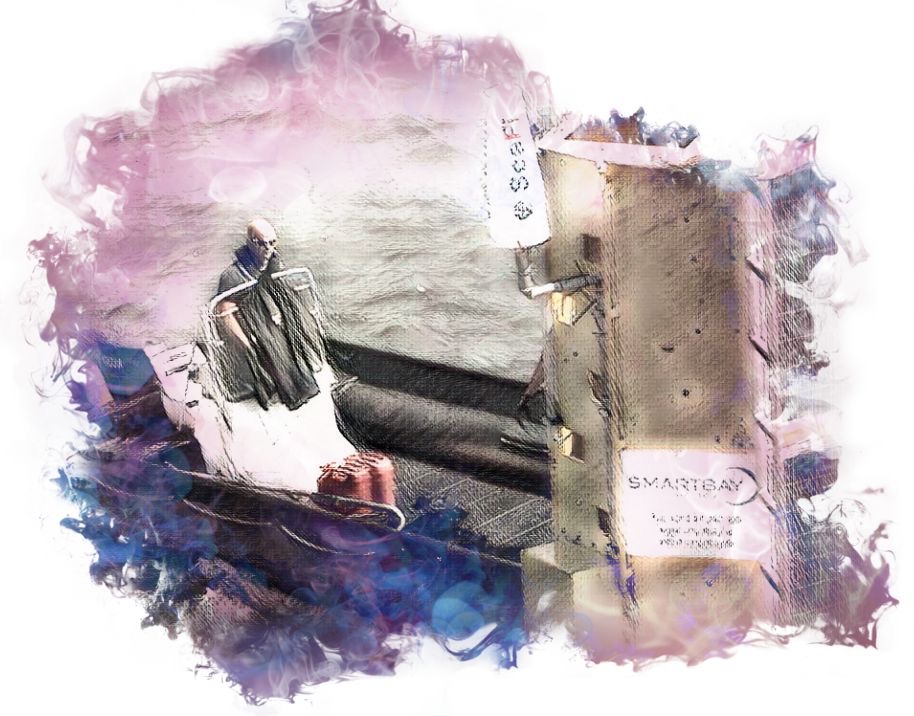The SeaFi concept is designed around a practical approach. In a scenario with an office housing ten  workers spread throughout different rooms, managing ten separate internet connections, each with its firewall setup, would be impractical. A Local Area Network (LAN) with a single internet connection offers a more efficient alternative, enabling resource sharing like printers among other assets. Under SeaFi, this LAN transforms into a Wireless Maritime Area Network (WMAN). This innovative network model allows a vast harbour or a widespread scientific research project covering a large coastal area to operate seamlessly through a network of dedicated wireless antennas while prioritising secure encrypted data transmission and custom-built hardware to withstand environmental elements.
workers spread throughout different rooms, managing ten separate internet connections, each with its firewall setup, would be impractical. A Local Area Network (LAN) with a single internet connection offers a more efficient alternative, enabling resource sharing like printers among other assets. Under SeaFi, this LAN transforms into a Wireless Maritime Area Network (WMAN). This innovative network model allows a vast harbour or a widespread scientific research project covering a large coastal area to operate seamlessly through a network of dedicated wireless antennas while prioritising secure encrypted data transmission and custom-built hardware to withstand environmental elements.
Wireless Maritime Area Network Concept:
Introduced to diminish the expenses associated with satellite communications and enhance the reliability and availability found in 3G/4G cellular networks primarily designed for terrestrial use, SeaFi consolidates data transmission into a single internet connection, with the option for a secondary connection for improved availability during outages. Once a Wireless Maritime Area Network (WMAN) is established, large sea expanses or coastal regions can seamlessly connect without direct internet access required to monitor devices remotely, with the aid of VPNs extending connectivity ranges efficiently.
Establishing a typical Wireless Maritime Area Network involves setting up local Coastal Stations, each featuring a backhaul and a maritime 802.11 relay, inspired by Wireless Metropolitan Area Network (WMAN) models. The early 2000s saw the evolution of local area networks (LANs) for internal data communication within office buildings. To interconnect LANs across a city, businesses began leveraging single-mode optical fibre lines, offering more bandwidth than traditional telephone network connections. Transitioning to a more integrated approach, maritime settings can benefit from streamlined communication networks without the necessity of public wide area network (WAN) gateways in remote coastal locations.
Navigating the complexities of remote coastal operations, including sensor systems placement and data retrieval from various maritime vessels, challenges arise due to limited connectivity options beyond satellite or cellular networks. SeaFi Coastal Stations strategically placed on ships and buoys can effectively substitute traditional satellite gateway s or cellular modems, offering increased coverage and seamless integration with existing systems for reliable communication at sea. Adapting to the unique demands of maritime communication, deploying SeaFi stations requires specialised equipment and rigorous testing to ensure optimal performance in challenging marine environments.
s or cellular modems, offering increased coverage and seamless integration with existing systems for reliable communication at sea. Adapting to the unique demands of maritime communication, deploying SeaFi stations requires specialised equipment and rigorous testing to ensure optimal performance in challenging marine environments.
In conclusion, a Wireless Maritime Area Network offers a cohesive solution to streamline connectivity, reduce redundant connections, and enhance security and accessibility in maritime communication systems. By centralising data traffic and optimising resource usage, this innovative network concept pvides a robust framework to support diverse maritime operations effectively while minimising bandwidth congestion and ensuring data integrity across coastal regions.



